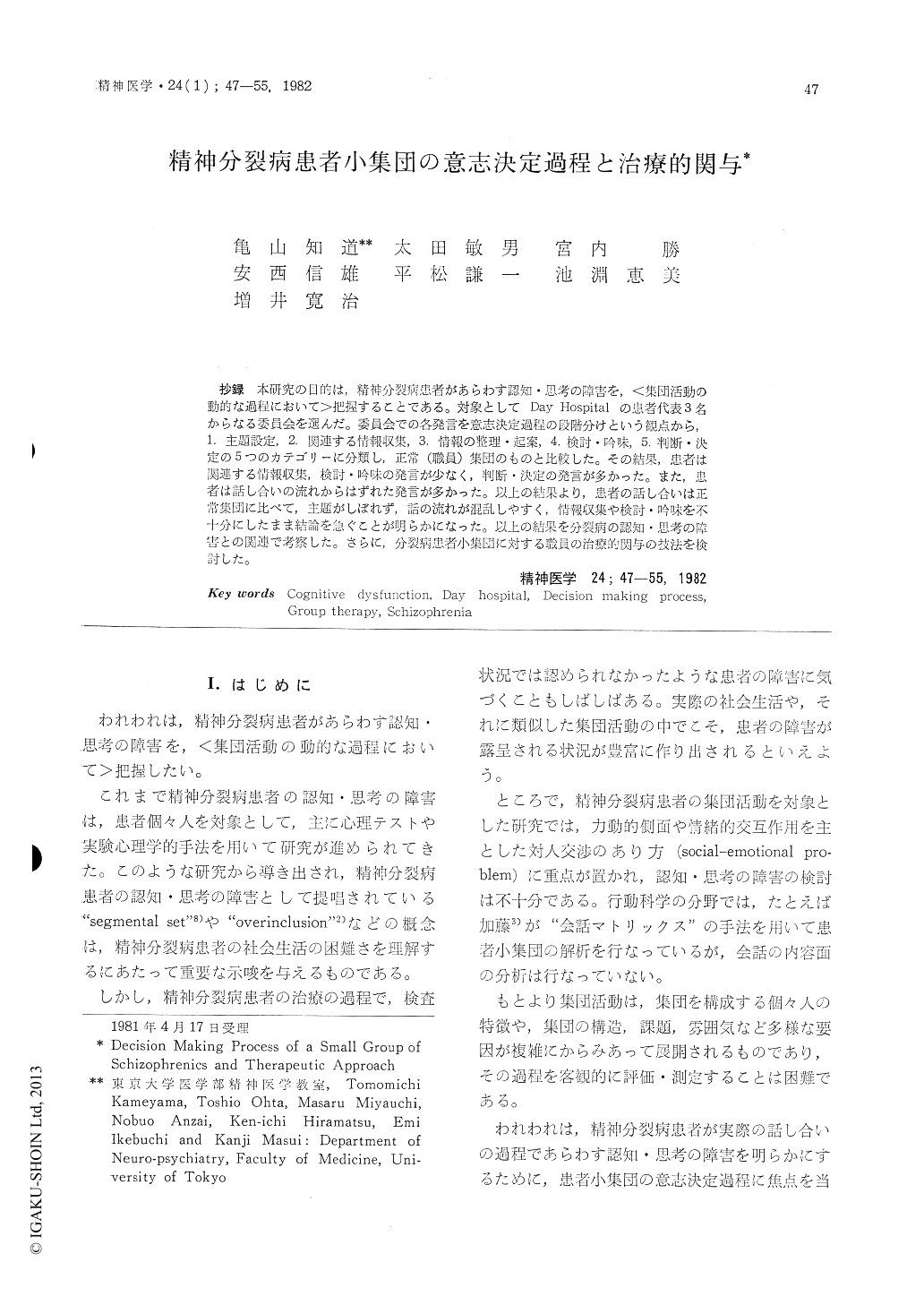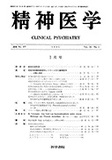Japanese
English
- 有料閲覧
- Abstract 文献概要
- 1ページ目 Look Inside
抄録 本研究の目的は,精神分裂病患者があらわす認知・思考の障害を,〈集団活動の動的な過程において〉把握することである。対象としてDay Hospitalの患者代表3名からなる委員会を選んだ。委員会での各発言を意志決定過程の段階分けという観点から,1.主題設定,2.関連する情報収集,3.情報の整理・起案,4.検討・吟味,5.判断・決定の5つのカテゴリーに分類し,正常(職員)集団のものと比較した。その結果,患者は関連する情報収集,検討・吟味の発言が少なく,判断・決定の発言が多かった。また,患者は話し合いの流れからはずれた発言が多かった。以上の結果より,患者の話し合いは正常集団に比べて,主題がしぼれず,話の流れが混乱しやすく,情報収集や検討・吟味を不十分にしたまま結論を急ぐことが明らかになった。以上の結果を分裂病の認知・思考の障害との関連で考察した。さらに,分裂病患者小集団に対する職員の治療的関与の技法を検討した。
Cognitive dysfunction of schizophrenics makes their social adjustment extremely poor. The aim of this study is to describe cognitive dysfunction of schizophrenics manifested in decision making processes of a task-oriented small group as a model of social life.
The subjects chosen for this study were three schizophrenic patients being treated in the Day Hospital attached to the Neuropsychiatric Department of University of Tokyo Hospital. They were members of the Acting Committee for Hiking, and engaged in planning and management for a major hike. They had preparatory meetings for it for over a month. Two nurses also attended the meetings, but tried to act as regular members. Explicit advice was spared in fear of its harmful effect upon the subjects' sense of achievement.
Every speech at these meetings was classified into the following five categories: 1) subject setting; 2) collection of related information; 3) classification of information and resetting; 4) discussion; and 5) determination. These categories were designed to correspond to the various steps of the decision making process. Every speech at hospital staff meetings was also recorded and classified for comparison. The speech category profile of the subjects at the meetings of Acting Committee was compared with that of the two nurses. Comparison was also made between the speech category profile of all members at the Committee meetings and that of the staff at the hospital staff meetings.
The results are as follows: First, the frequency of speech on the part of nurses was about a half as high as that of all other members at the Committee meetings. Secondly, the frequency of speech of the subjects classified into the category 4 (discussion) was significantly low, and that classified into the category 5 (determination) was significantly high as compared with the frequency of speech of the nurses at the Committee meetings. Thirdly, the frequency of speech of the Committee meetings classified into the category 2 (collection of related information) was significantly low and that classified into the category 5 (determination) was significantly high as compared with the frequency of speech of the hospital staff meetings. Fourthly, the subjects' speech often deviated from the supposed standard process of decision making, taking a short-cut from category 1 to category 5.
The present study shows that schizophrenics' cognitive dysfunction manifested itself in the decision-making situation, where they could not set appropriate topics, and were prone to confusion and hasty conclusions.

Copyright © 1982, Igaku-Shoin Ltd. All rights reserved.


